Related Research Articles

A nocturne is a musical composition that is inspired by, or evocative of, the night.

Ferdinand Rudolph von Grofé, known as Ferde Grofé was an American composer, arranger, pianist and instrumentalist. He is best known for his 1931 five-movement symphonic poem, Grand Canyon Suite, and for having orchestrated George Gershwin's Rhapsody in Blue for its 1924 premiere.

Esa-Pekka Salonen is a Finnish conductor and composer. He is the music director of the San Francisco Symphony and conductor laureate of the Los Angeles Philharmonic, Philharmonia Orchestra in London and the Swedish Radio Symphony Orchestra.
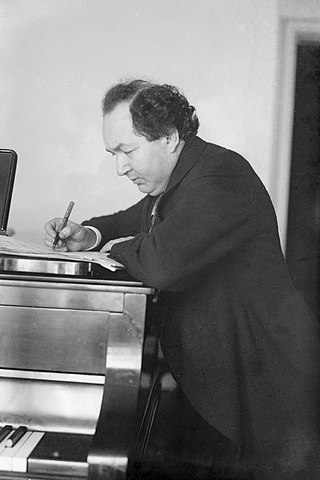
Leopold Mordkhelovich Godowsky Sr. was a Lithuanian-born American virtuoso pianist, composer and teacher. He was one of the most highly regarded performers of his time, known for his theories concerning the application of relaxed weight and economy of motion within pianistic technique – principles later propagated by his pupils, such as Heinrich Neuhaus.
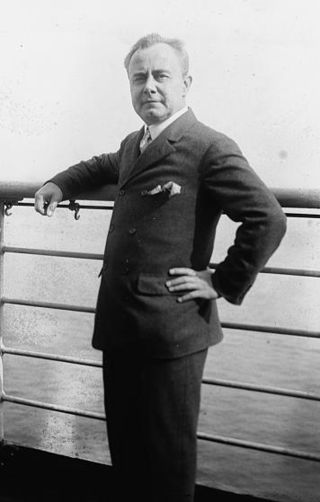
Josef Casimir Hofmann was a Polish-American pianist, composer, music teacher, and inventor.
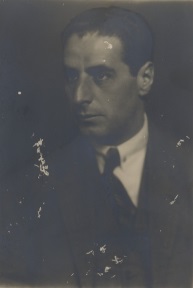
Ernst Toch was an Austrian composer of European classical music and film scores, who from 1933 worked as an émigré in Paris, London and New York. He sought throughout his life to introduce new approaches to music.
Suite bergamasque is a piano suite by Claude Debussy. He began composing it around 1890, at the age of 28, but significantly revised it just before its 1905 publication. The popularity of the 3rd movement, "Clair de lune", has made it one of the composer's most famous works for piano, as well as one of the most famous musical pieces of all time.
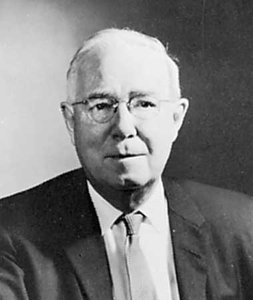
Leo Salkeld Sowerby was an American composer and church musician. He won the Pulitzer Prize for music in 1946 and was often called the “Dean of American church music” in the early to mid 20th century.
Leopold Damrosch Mannes was an American musician, who, together with Leopold Godowsky Jr., created the first practical color transparency film, Kodachrome.

Ivan Ilić is a Serbian-American pianist. He lives in Paris.

Mercedes Dagmar Godowsky was an American silent film actress.
The Suite for Cello and Piano, Op. 16, was written by Camille Saint-Saëns in 1866. This work is considered the launching point of the composer's career.

Dezso d'Antalffy, was a Hungarian organist and composer. He was one of the most significant performing artists of his time. He composed pieces for orchestra, chamber orchestra, choir, piano and organ which were published by Schirmer, Ricordi, Leduc, Salabert, Steingräber, Breitkopf and Universal.

Frank Lorimer Mayo was an American actor. He appeared in 310 films between 1911 and 1949.

Elinor Remick Warren was an American composer of contemporary classical music and pianist. Her mother had been a student of a pupil of Franz Liszt, and introduced her daughter to art music. Warren's father was considered a fine amateur singer who had once considered singing professionally. Warren trained as a pianist with Kathryn Cocke through high school and took composition lessons from Gertrude Ross starting her second year in high school. She sent an early composition to the Schirmer music publishing company and received her first contract to publish with them before she graduated from high school. Between high school and college, Warren studied piano with Harold Bauer and Leopold Godowsky. After attending Mills College for a year, she moved to New York, where she studied privately with composers Frank La Forge and Clarence Dickinson, both of whom were known for their art songs. Warren supported herself as an accompanist for singers and went on tour with contralto Margaret Matzenauer.
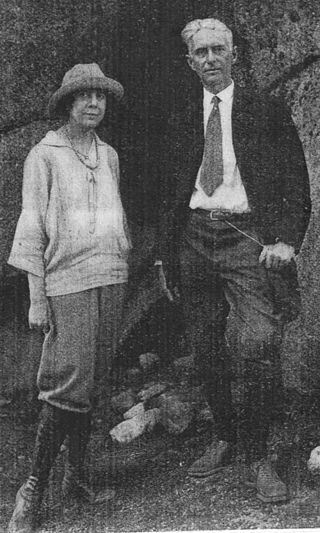
Fannie Charles Dillon was an American pianist, music educator and composer.
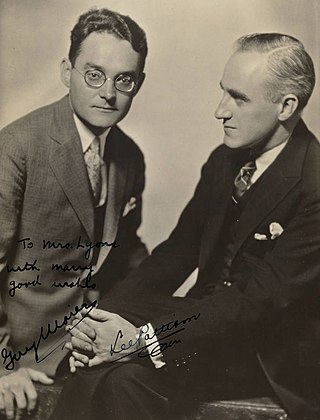
Guy Maier was a noted American pianist, composer, arranger, teacher, and writer. From about 1919 to 1931, he was a member of the popular two-piano team of Maier and Pattison.

Lee Pattison was a noted American pianist, composer, arranger, opera director, and teacher. From about 1919 until 1931 he was a member of the popular two-piano team of Guy Maier and Lee Pattison. Lee Pattison Recital Hall at Scripps College in Claremont, California, is named for him.
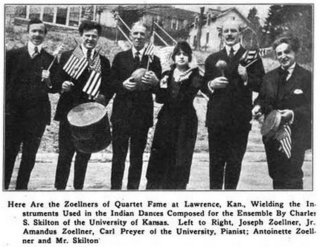
The Zoellner Quartet was a string quartet active during the first quarter of the 20th century. It was once described as "the most celebrated musical organization in the West which devotes its energies exclusively to the highest class of chamber music." After training in Europe, the group in its prime years toured widely throughout the United States. Although all members were natives of Brooklyn, New York, the ensemble formed a strong early association with Belgium and in publicity often billed itself as "The Zoellner Quartet of Brussels"; its ultimate base of operations was in California. With one brief interruption at the end of World War I, the membership remained constant throughout the quartet's existence: Joseph Zoellner and his children Antoinette; Amandus; and Joseph, Jr. A second "Zoellner Quartet" was later formed by Joseph, Jr. and three unrelated musicians.
References
- ↑ "Works by Leopold Godowsky (1870 - 1938)". Rolf's Music Blog. Retrieved 2023-07-21.
- 1 2 "Triakontameron - Hyperion Records - CDs, MP3 and Lossless downloads". 2019-03-02. Archived from the original on 2019-03-02. Retrieved 2023-07-21.
- ↑ Ewen 1959, p. 552.
- ↑ "Review of Le festin d'Ésope and Other Works for Solo Piano". Notes. 60 (1): 290–295. 2003. ISSN 0027-4380. JSTOR 4487129.